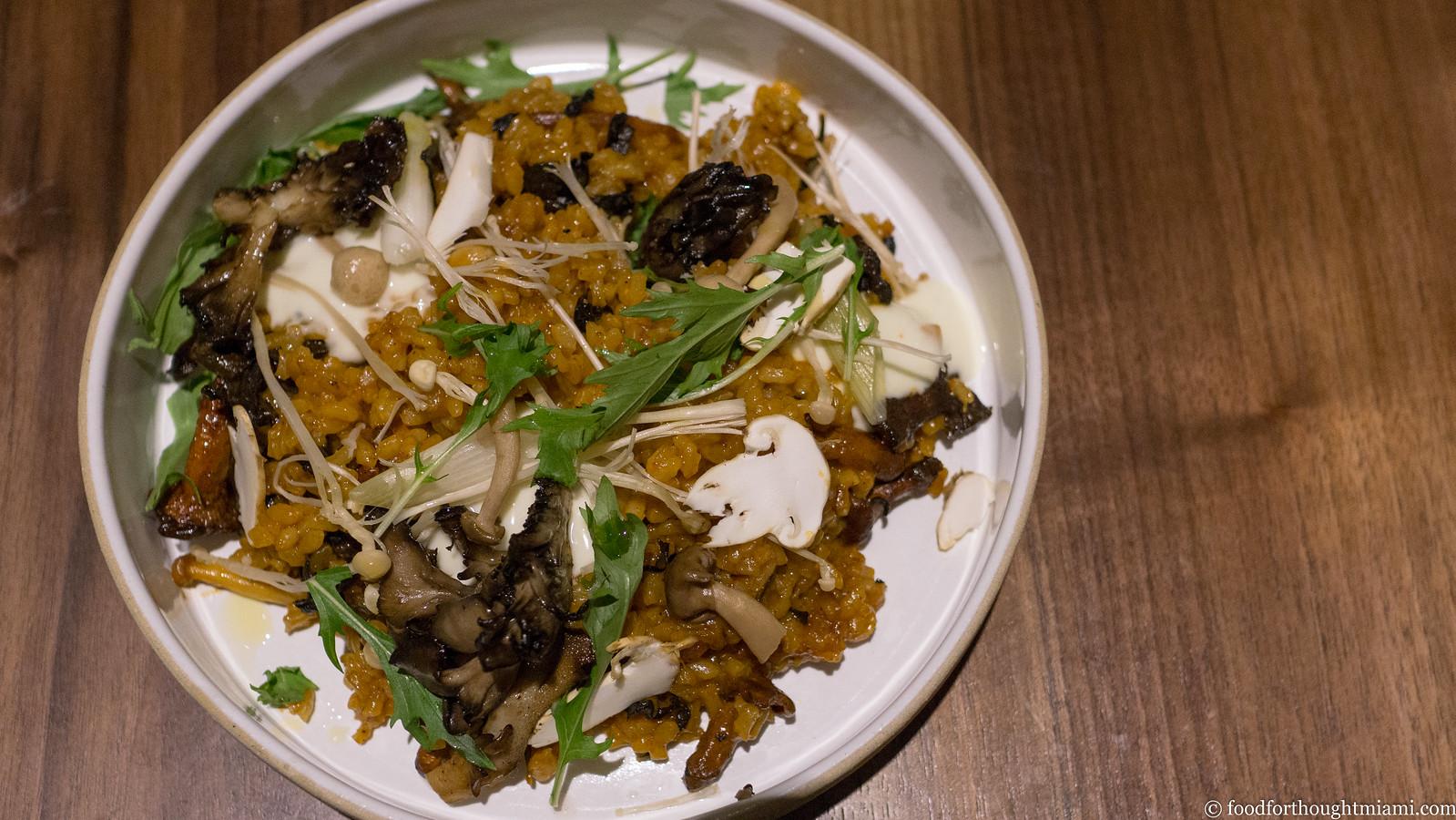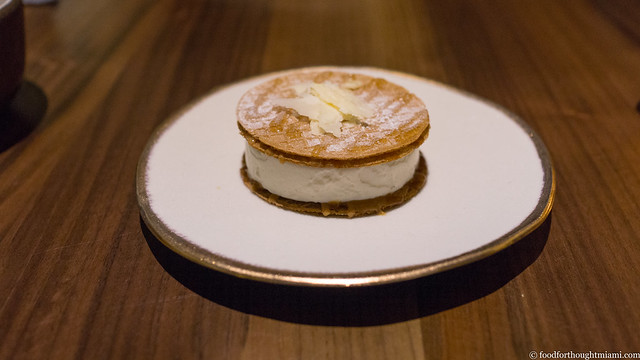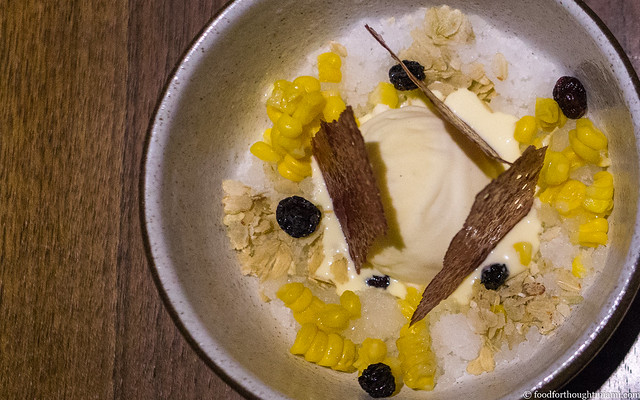Of the many big-name Miami restaurant openings of late, the one I've been most curious about is Paul Qui's Pao in the Faena Hotel Miami Beach. I've followed the chef since he was in the kitchen at Austin's Uchi, watched him dominate a season of Top Chef and win a James Beard Award in 2012, then go on to open both a tasting menu format restaurant (Qui) and several ragingly successful food trucks in Austin (East Side King and its sibling Thai-Kun, which was on Bon Appetit's list of best new restaurants of 2014).
Pao is Qui's first venture outside of Austin, and it's a big one: the Faena is perhaps the most ostentatious and over-the-top of many recent ostentatious, over-the-top Miami developments. The billion dollar project includes not only the hotel, where rooms start at $900 a night, but also a Norman Foster-designed condominium where units are selling for an average of $3,000 per square foot (including a $60 million sale to a billionaire hedge fund manager) and the Rem Koolhaas-designed Faena Forum, a multi-disciplinary arts exhibition center.
It is both exciting and, in a way, alienating. In many respects, I simply don't recognize this as the city where I was born and have spent nearly half a century. Faena, and other recent projects like the expansion of the Design District into what seems like a living catalog of the holdings of LVMH, are designed as playgrounds for the über-wealthy, international jet-set; they have little connection to the locals who actually live here.
But if it brings chefs like Qui to Miami, then who am I to complain?
Oddly, despite all the hullabaloo over Faena, details on Qui's restaurant have been somewhat hard to come by, even as it opened at the beginning of this week. I heard the food would be "modern Asian" with "Filipino, Spanish, Japanese and French flavors;" I heard a lot more about the $6 million Damien Hirst gold-leafed unicorn sculpture ("Golden Myth") that is the centerpiece of the dining room. But that's OK: so many restaurants put out so much pre-opening hype these days that I grow tired of hearing about them before they've even opened. By contrast, I didn't have much of an idea of what to expect heading into Pao. So here's a first look.
(You can see all the pictures from my first visit to Pao – including shots of the menu, which is not yet available online – in this Pao by Paul Qui flickr set).
The menu starts with four choices of fish crudos, along with a "binchotan service" featuring several items that can be grilled tableside over Japanese charcoal. It then moves through about a half-dozen choices of small plates, several rice dishes and a selection of several larger-format plates meant for sharing.
The first item on the menu points toward Qui's Filipino heritage: kinilaw, the Philippines' version of ceviche. Slices of hiramasa (a/k/a buri, yellowtail, amberjack) are bathed in coconut milk and coconut vinegar, garnished with hearts of palm and slivered red onion, and dappled with Spanish olive oil. It's richer, and less acidic, than a typical ceviche, and I found myself wishing the vinegar was turned up a little louder than the coconut milk. The other crudo we tried, a carpaccio of Japanese sea bream, was plated with a puddle of smoked soy sauce and leek oil contained within a ring of kumquat jam that tasted as bright and vibrant as its vivid orange hue. The quality of the fish was excellent, but I was somewhat surprised that of the four crudos offered, none came from local waters
(continued ...)
The small plates include both the ornate and the simple. In the former category is Qui's "unicorn," an ode to that gilded centerpiece of the dining room. A spiky sea urchin shell serves as the bowl for a frothy grilled sweet corn pudding garnished with lobes of uni (uni / corn – get it?), enriched with a sake aioli, and brightened with kalamansi and arbol chile. In the latter, a slider-sized pork katsu sandwich comes with a sticky fruit sauce that's happily more sour than sweet, and a sinus-clearing dash of karashi mustard. The "Grilled Greens" features both grilled and raw brassicas over a charred onion sour cream dressing, speckled with crunchy pine nuts and crisp diced green apple.
I've said before how much I enjoy the Japanese custom of concluding a meal with a rice dish as a way of ensuring all appetites are sated. You can do that by choosing from among four rice dishes at Pao, including this one in which delightfully chewy, short-grain koshihikari rice is suffused with the flavor of a mushroom dashi, and served with a variety of different mushrooms, slivers of pickled onion and a dappling of sake aioli for richness. The other options include a similar dish that adds smoked short rib, a Filipino pork adobo rice, and a chirashi with raw fish and pickled vegetables.
Pao would be a good place to go with a group, as the large-format items which we had to pass on sound like some of the most intriguing: a three-pound wagyu cote de boeuf with yuzu kosho, brown butter and kimchi; a two-pound pork butt adobo with ginger-garlic rice, dried shrimp and green mango pico. Maybe next time.
There are only four desserts and several are pretty unusual. One that combines cheddar cheese ice cream with dulce de leche and peanut praline is something of a Qui signature dish, and the combination is oddly reminiscent of a Lance ToastChee peanut butter and cheese cracker in ice cream sandwich form. Another unusual pairing that works is the maiz con hielo. The combination of sweet corn and shaved ice is actually common in the Philippines; here, the ice has the zing of fresh lime, dried blueberries add some pop, crispy corn flakes (?) give textural contrast, and a creamy gelato binds everything together. We had to save for another visit the halo halo, another Filipino staple that combines shaved ice with various fruits, sweet beans and lurid purple yam ice cream.
For a place that just opened this week, service and pacing were pretty sound, other than one extended lull before the rice course arrived (it was probably not a coincidence that this was the same time as the owner, Alan Faena, in his trademark white suit and fedora, arrived and bounced his way around several different tables before settling in to have a few dishes).
But obviously, with one visit only two days after opening, it's still too soon to know all that much about Pao. I look forward to getting to know it better.
Pao by Paul Qui (Faena Hotel Miami Beach)
3201 Collins Avenue, Miami Beach, Florida
786.655.5600
[1] Correction: two of the four crudos use kindai bluefin tuna, which are raised from eggs and farmed, and not fished from the increasingly depleted stocks of wild bluefin tuna. I'd have loved to see this listed as kindai on the menu so I could have ordered it without guilt.











Amazing! All of the food looks so gorgeous and unique. Thank you for sharing!
ReplyDeleteThese prices are insane for such small portions, I guess I'm not in that league. I heard the short rib fried rice was good, is that the whole dish or just a portion on your plate?
ReplyDeleteParticularly when you're going to certain places, the reality is that you're not just paying for the food on your plate - you're literally paying for your table, and the decor, and the artwork, and everything else. This meal, including desserts, but excluding drinks, tax & tip was $65 per person. It was a good amount of food, nobody went home hungry. To me, that's a perfectly appropriate amount to pay for a dinner in a place that is about as lush and fancy as Miami gets.
DeleteThe crudos are priced comparably to what you'd pay for a sashimi dish at a higher-end Japanese restaurant (and the quality is comparable too). The salad was $12. The sandwich was $7. Some of the larger dishes there are pretty pricey, but many are larger format and designed for sharing.
Clearly there are many places to get a cheaper meal but I don't think anybody is bargain-hunting at the Faena. Criticizing it for not being a great value is kind of like criticizing Burger King for not having a great caviar selection.
Well, I finally went 5 months after I posted that comment and I agree everything was worth it! We opted not to have Spice menu and went a la carte and elated with every dish, the wait staff, the ambience!
DeleteWonderful and thorough review as usual. I finally visited last night. Not sure if you already know, but they now list "Pao supports sustainable Bluefin tuna through Kindai University aquaculture" on the menu.
ReplyDelete